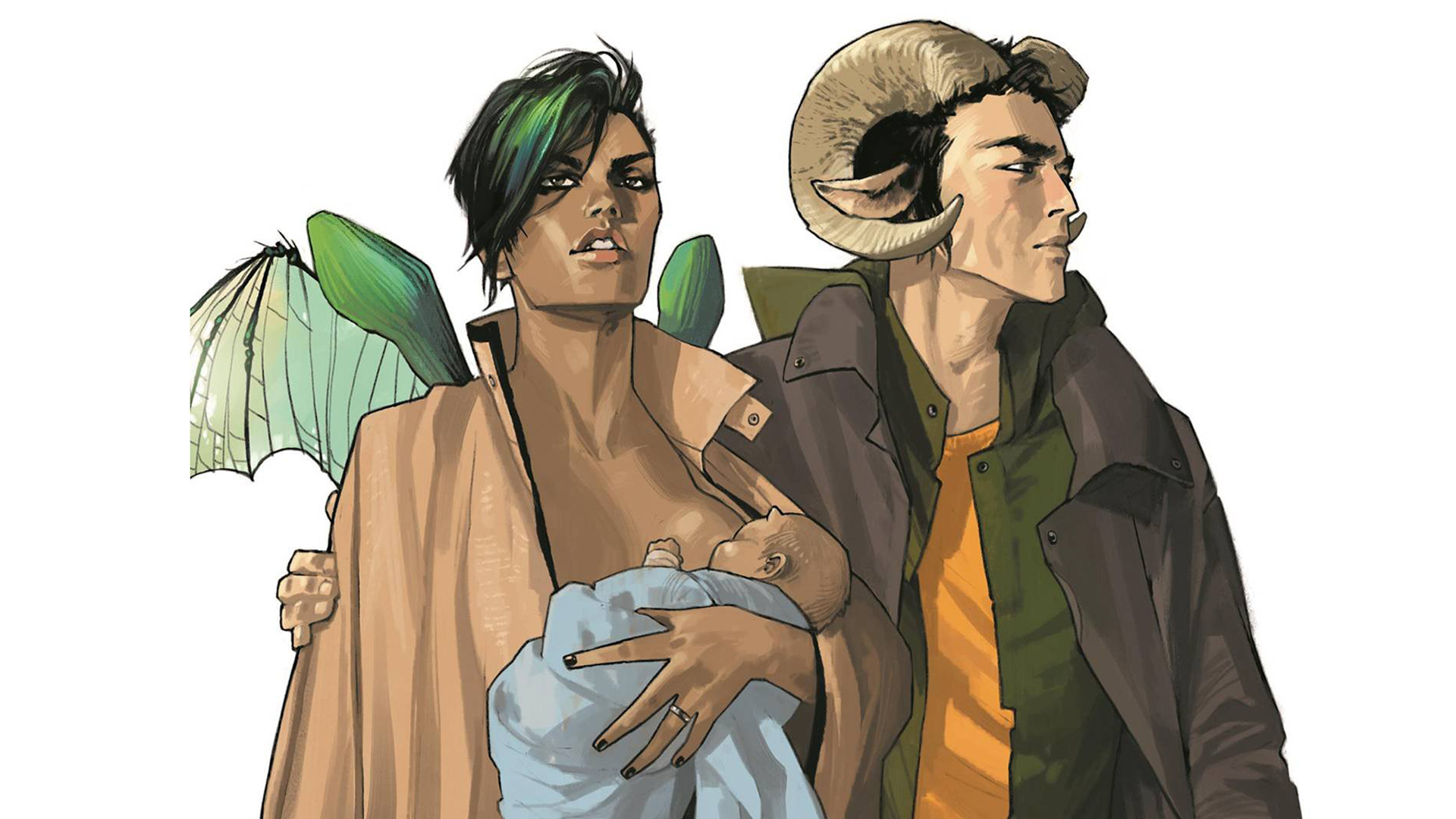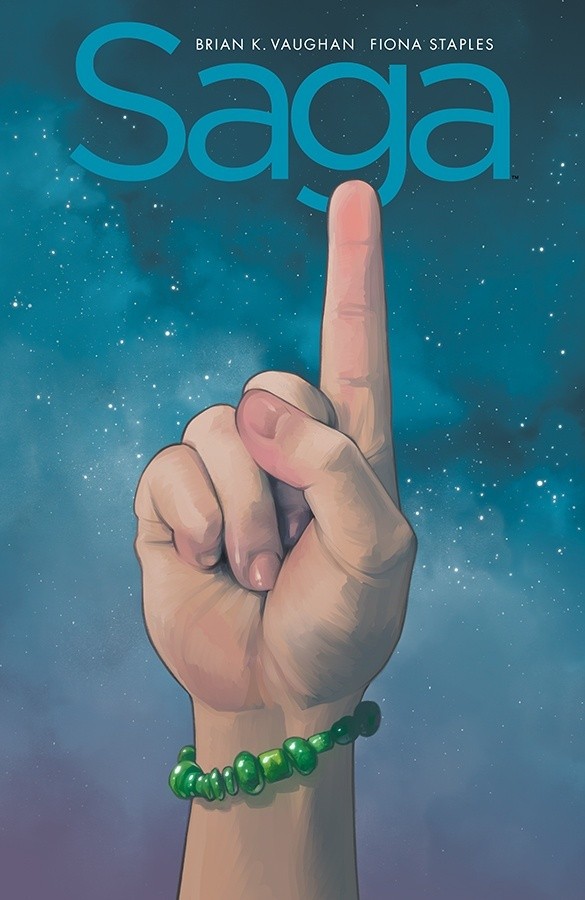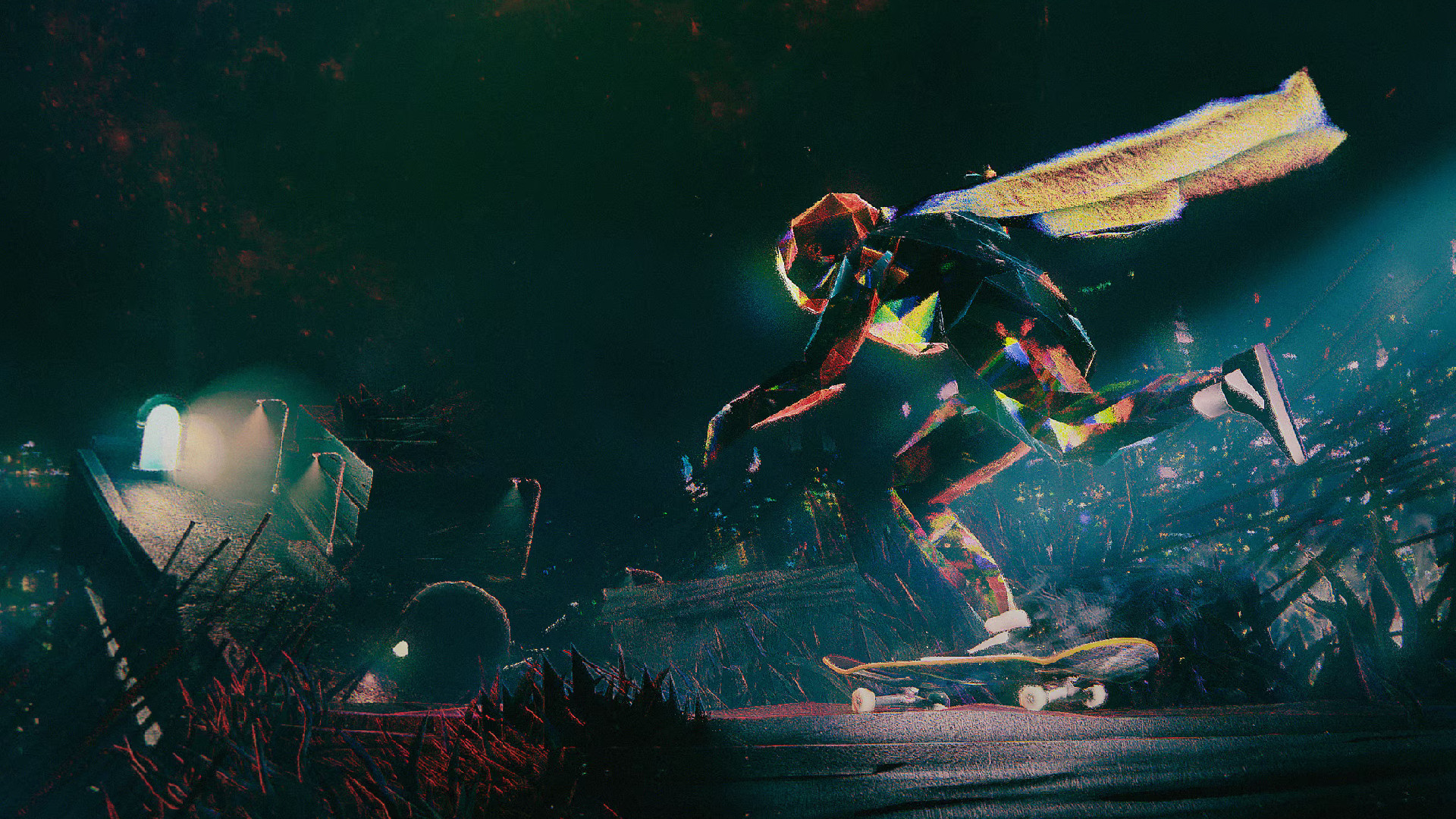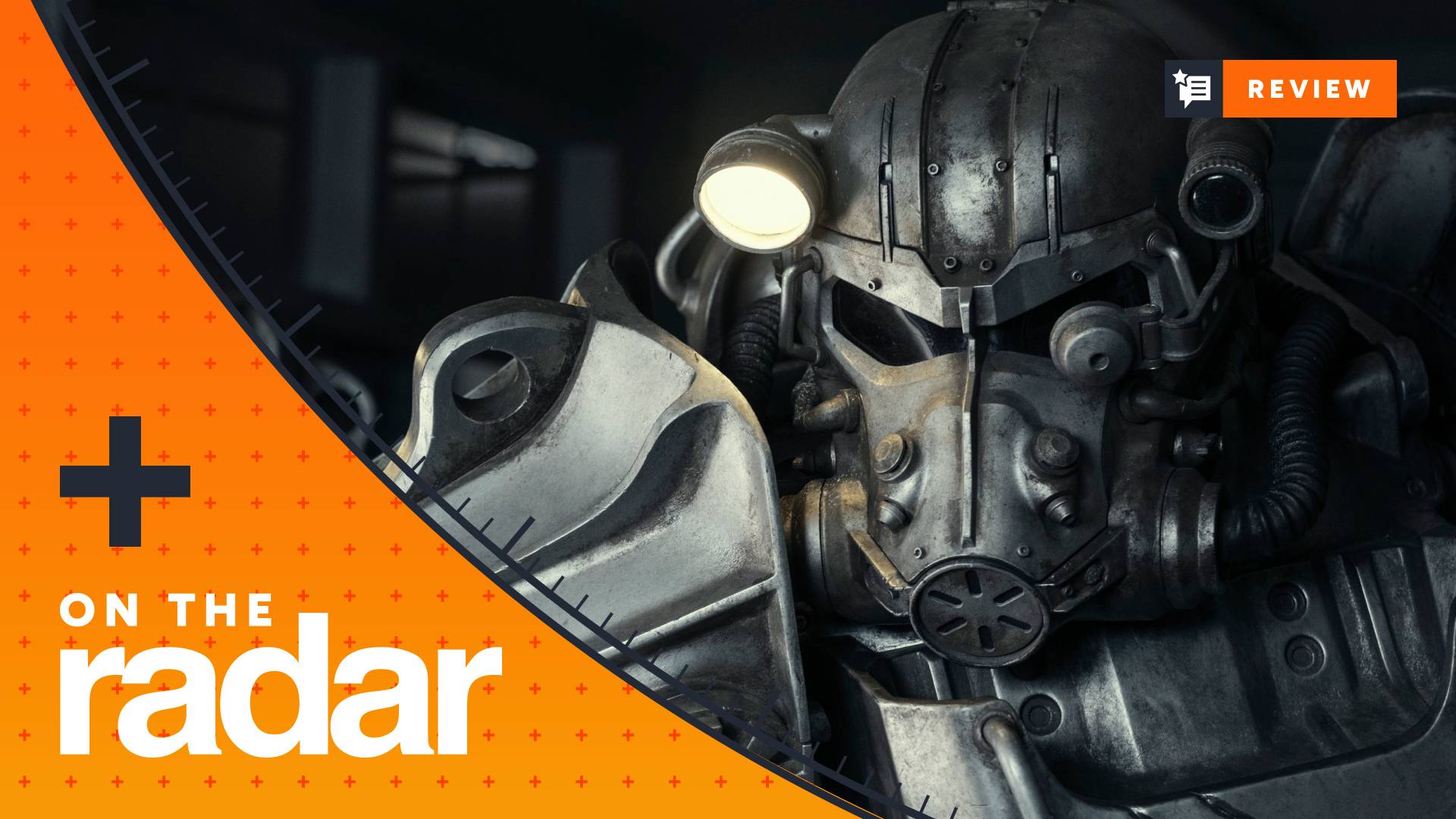Saga - Experts and insiders look at its importance ahead of its return
Anticipating the return of Saga and measuring its impact on comics
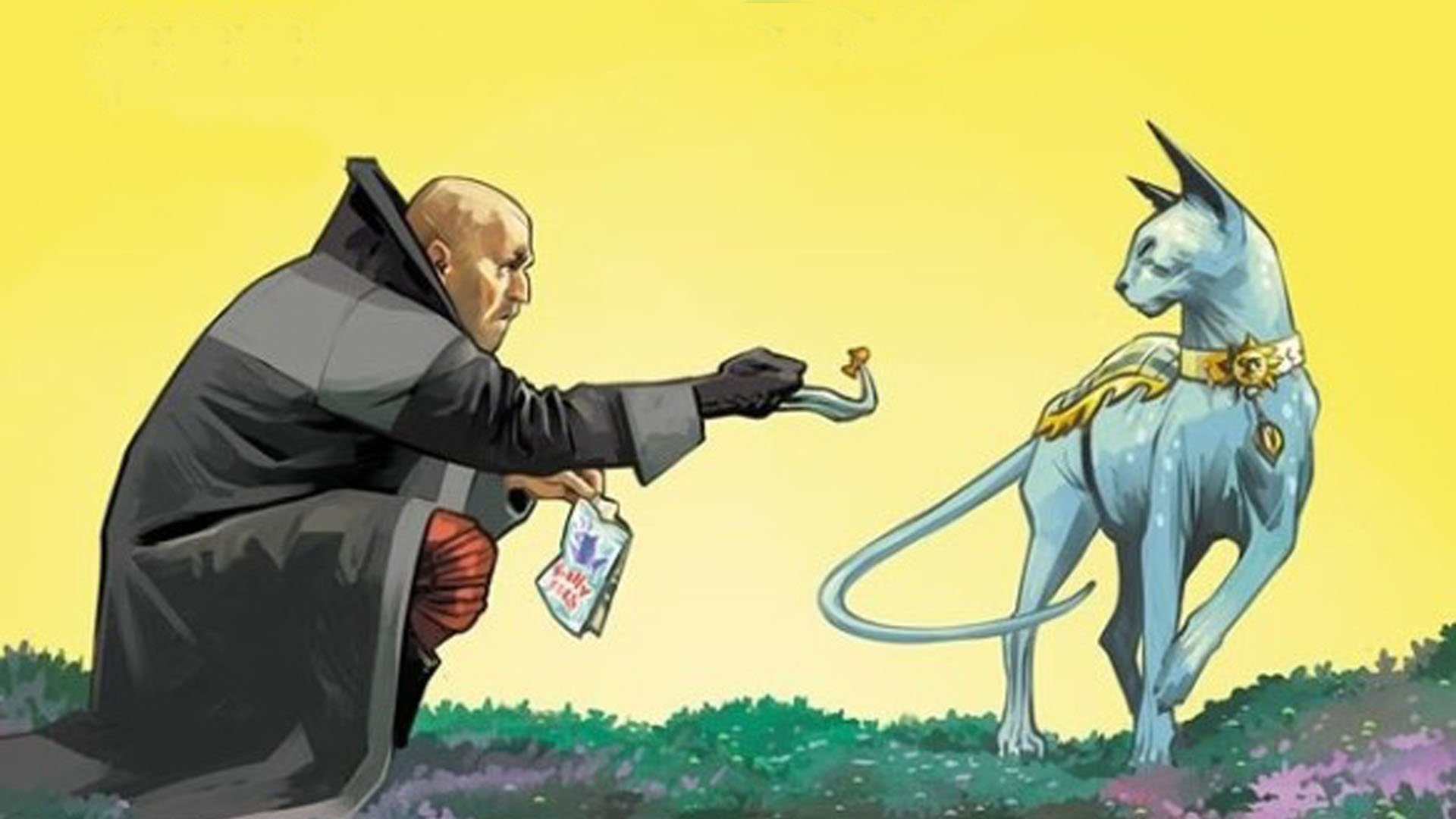
Brian K. Vaughan and Fiona Staples' Saga has been on hiatus (an 'intermission' as they call it) for three years. That wait has been a saga of its own, but the wait is almost over, as the franchise returns January 26 with Saga #55.
And to say there is excitement is an understatement.
In some ways though, the three-year-hiatus has only heightened the interest in the already-successful series. The hiatus was first announced in Saga #54 on July 25, 2018. While Saga's authors had taken multi-month breaks between series arcs before, this one was framed as more substantial – "for at least the next year" according to a letter in Saga #54 – and but grew to be much more than that.
At the time, the authors said that Saga was at the halfway point, inferring that there were still many - 54, give or take – more issues to go once they'd had time to catch up, recharge, and live a little.
The first real sign that Brian K. Vaughan and Fiona Staples were ready to return came in late 2021, when Image Comics announced a new boxed set of the nine previously-released volumes. Contained within that announcement was a message from Vaughan addressed to retailers (but also for readers), that they have been "hard at work on the second half of Hazel's epic journey."
"We promise that exciting news is coming, and we wanted to offer your customers a cool new way to catch up on our Eisner Award-winning series: this gorgeous box set, collecting all nine of our bestselling trade paperback collections in one affordable package," says Vaughan. "We think it's the perfect way to introduce any 'mature readers' who haven't yet tried Saga to our weirdly wonderful universe. Thanks again, and we look forward to gracing your stands with more issues very soon!"
This is an alternative to the recent omnibus collection of all 54 issues, Saga Compedium Volume 1. The idea behind this is to get more new readers hooked into the series as Saga #55 (presumably) nears its debut.
Get the best comic news, insights, opinions, analysis and more!
But what makes this series so important?
"Saga's return feels like a sign of coming out of the darkness of the past few years… in order to cry passionately about fictional family and friends that we've missed dearly," says writer Danny Lore, who is also an acquiring editor for the literary magazine Fiyah.
"Saga is the rare book that has garnered so much goodwill that those who put it down years ago are still overjoyed to pop it back open. It hasn't been forgotten, and its impact has never stopped moving the industry forward."
The impact of Saga
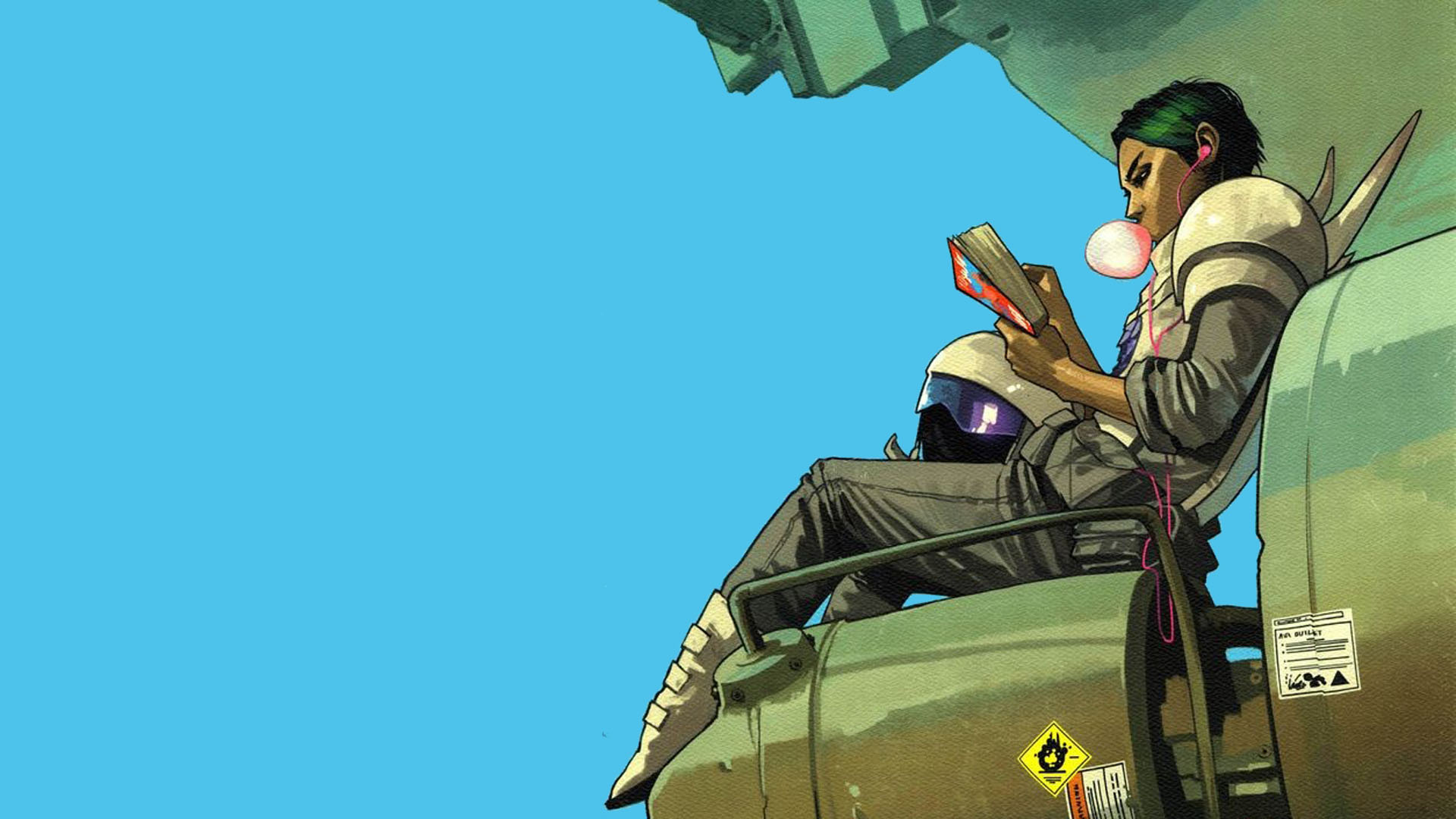
"A lot of words have been put down about 'adult' or 'mature' themes in comics, and Saga changed what those descriptions mean," says writer Jennifer de Guzman, who was the public relations and marketing director for Saga publisher, Image Comics, for the first two years of its run.
Saga #1's release on March 14, 2012 was Brian K. Vaughan's return to comics after a multi-year hiatus in which he spent time writing for television and film. In Saga, he was partnering with an up-and-coming DC artist (in Fiona Staples), who was looking to branch out into creator-owned work after a few years with DC.
Saga was inspired Vaughan's wife becoming pregnant with their second child, and this idea of parenthood mixed with older ideas from the writer's childhood. Like a post-modern sequel to Romeo & Juliet, Saga cut to the core with an expressive and honest view of relationships between people and the uneasy transition to adulthood while set in a sci-fi fantasy world where a guy with a TV for a head is the relatively normal compared to what comes next.
"The characters grew along with the readers, too. In a way, Saga was a throwback to comics like late-'80s X-Men, which got readers invested in the emotional lives and arcs of the characters, that paid attention to the styling of characters – their costumes, their hair – and romantic relationships," de Guzman tells Newsarama. "Those were formative comics for a lot of people that Saga appealed to."
Want some more space adventure to read while you wait for Saga to return? Here's the best Star Wars comics.
Where Saga diverged was that it was creator-owned (as opposed to company-owned, like the X-Men), and its creators approached Saga as a craft between two people – not as a 'franchise' or ... shudder... an IP, and therefore not planned for a perpetual life with subsequent stories, spin-offs, and continuations by people other than Vaughan and Staples.
"There's a difference with Saga in that readers know that there will never be a reboot; a new writer and artist aren't going to re-imagine Hazel's origin story," says De Guzman. "It shares that in common with books like Love and Rockets – also formative for a lot of readers!"
While Saga has been a hit for comic stores and bookstores, it also found an audience in the formative world of libraries. "Saga was a huge hit for libraries. It was among the first adult age series that broke out of the superhero, Marvel/DC readership," says Moni Barrette, president-elect of American Library Association's Graphic Novel & Comics Round Table, and founder of Creators Assemble. "It's such a unique and heartfelt story yet deeply weird, reading it in a library setting almost makes you feel part of a secret club."
The saga-like wait for more Saga

Ask any Saga reader if they enjoy or appreciate the hiatus, and they'd likely give a resounding 'No!'. While hiatuses and delays in the traditionally monthly North American comic book market lead to unease and concern, as a book whose popularity is as much in comic stores as it is in bookstores and libraries, readers in those latter two areas are accustomed to several years between new volumes.
"For most comics, I think such a long pause would be a death sentence. But Saga is something different," says de Guzman, who prior to Image was the editor-in-chief for the independent SLG Publishing. "Its seventh trade paperback volume was enough of an event to be reviewed by NK Jemisin in The New York Times. Readers and retailers both are going to be excited to have it back."
As the head marketing person for Image Comics during Saga's first two years of publication, de Guzman has an arresting memory about how some comic shops react to hiatuses – even those that are far smaller than three years.
"When the first break was announced, a retailer sent me a picture of his children and asked me why we were taking food out of their mouths"
Jennifer de Guzman, writer
"Brian and Fiona took one of their breaks between story arcs, so there wouldn't be a new issue for three months," de Guzman says, referring to Saga #6 and Saga #7. "When the first break was announced, a retailer sent me a picture of his children and asked me why we were taking food out of their mouths. That level of entitlement and strangeness is an outlier, but comics that sell well consistently, issue after issue, do help comics shops. They'll want to build a buzz around Saga's return, too. "
With the upcoming Saga boxed set, as well as the Saga Compedium Vol. 1 and various individual arc collections still available from Image Comics, comic stores are situated where they could take advantage to catch people up before the next issue.
On the libraries front, the Saga hiatus can be seen as perfect timing given the ending of the last issue. "Saga really took a 'season finale' in a spot that rocked readers. In libraries, with few exceptions like New York Times bestsellers, age of a title or series hardly matters," Barrette tells Newsarama.
"[In the intervening three years] I know some folks who have not only caught up, but re-read Saga in anticipation of a return, and they will be excited whenever that happens. Good libraries buy what their communities want. If Saga returns it'll be on digital and physical shelves everywhere!"
What will Saga be when it returns?
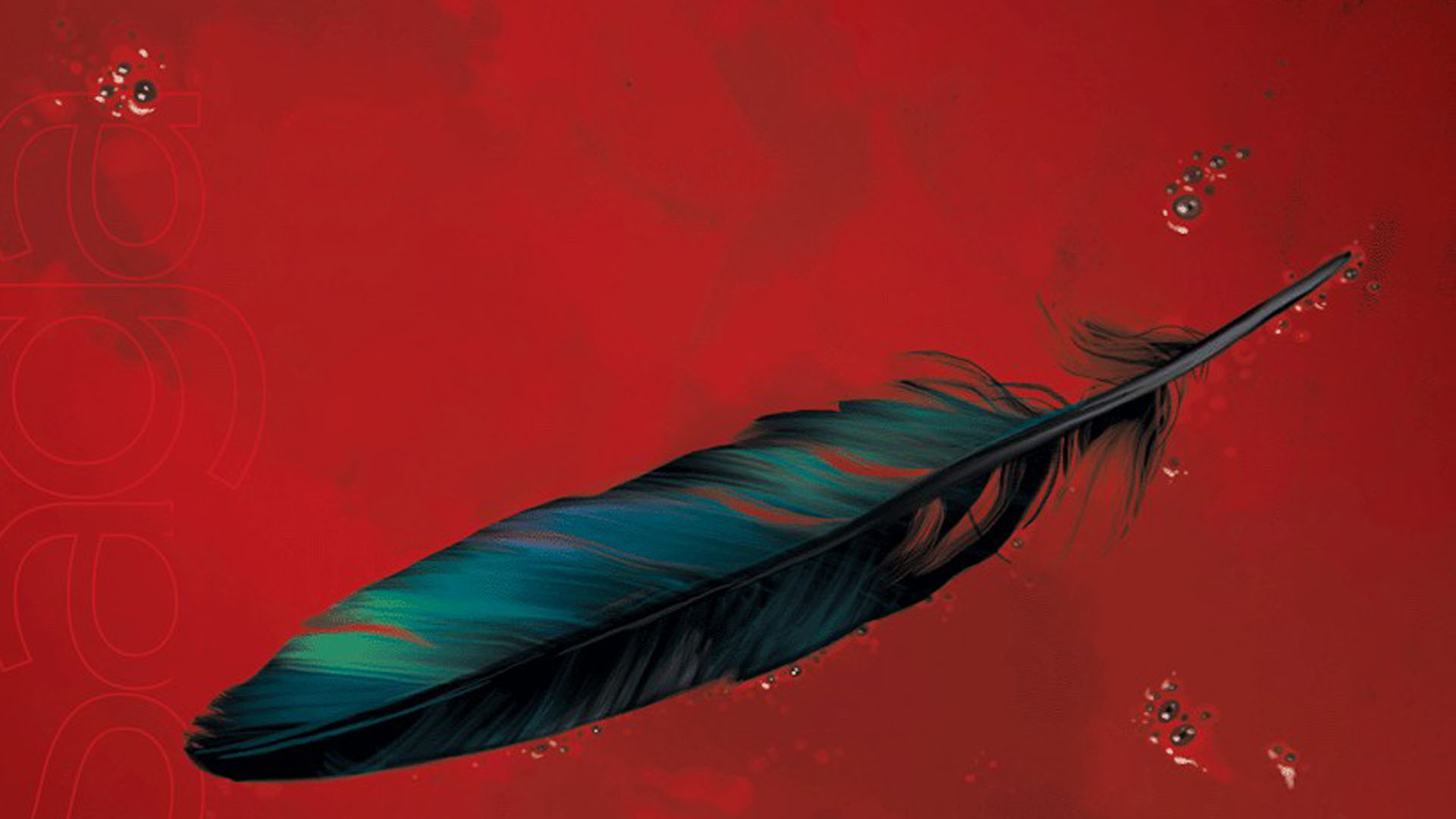
Now just days before the hiatus is over, Saga returns to readers who have grown up in the intervening years as well. It'll be interesting to see how that dynamic plays out between panels.
"Back then, there was a big-name writer, Brian K. Vaughan, paired with this exciting new, young artist, Fiona Staples, and Saga didn't feel or look like anything out there that I can think of," says de Guzman. "It was fantasy, science fiction, but utterly contemporary in its tone and its aesthetic was so bright and joyful, both in the art and writing (even though beloved characters kept dying!)."
"Image was best known for The Walking Dead, so Saga was definitely a contrast, sort of a signal that we were ready for something hopeful. It's probably cheesy to note that Saga was being conceived of at the beginning of the Obama era, but I think there is a lot of the zeitgeist of that time in it."
Whatever form the next chapter of Saga takes, it may not be the Saga from before – but in a way, that is the reason people loved the series – for how Alanna, Marko, and Hazel survived, grew, learned, and lost. And for the industry, helped instigate the industry to allow and encourage more like Saga.
"I can see its influence in current superhero comics – the fun, the affectionate irreverence, the increased diversity in terms of race, gender, sexualities, body types," says de Guzman. "It's such a change that the grim and dark superhero comics of 15, 20 years ago feel like definite relics, just absolutely from another era.
"So Saga will be coming back into a comics landscape that I think it had a big part in creating."
Saga #1 - #54 is available now in print and digitally. For the best digital comics experience, here are our recommended best digital comics readers for Android and iOS devices.
Chris Arrant covered comic book news for Newsarama from 2003 to 2022 (and as editor/senior editor from 2015 to 2022) and has also written for USA Today, Life, Entertainment Weekly, Publisher's Weekly, Marvel Entertainment, TOKYOPOP, AdHouse Books, Cartoon Brew, Bleeding Cool, Comic Shop News, and CBR. He is the author of the book Modern: Masters Cliff Chiang, co-authored Art of Spider-Man Classic, and contributed to Dark Horse/Bedside Press' anthology Pros and (Comic) Cons. He has acted as a judge for the Will Eisner Comic Industry Awards, the Harvey Awards, and the Stan Lee Awards. Chris is a member of the American Library Association's Graphic Novel & Comics Round Table. (He/him)

